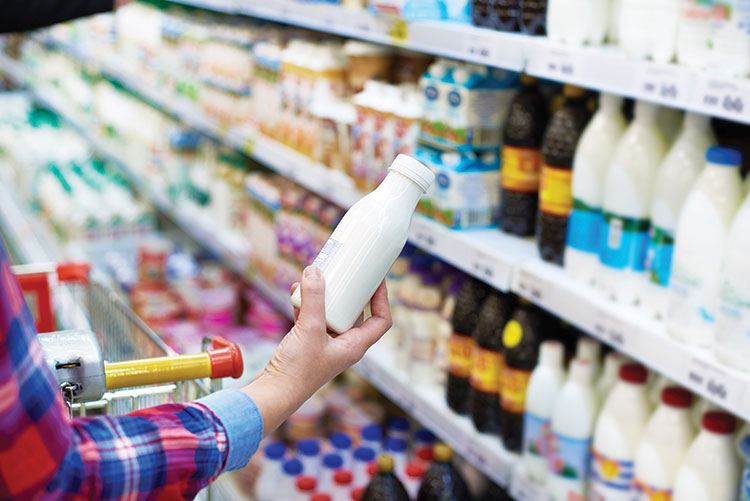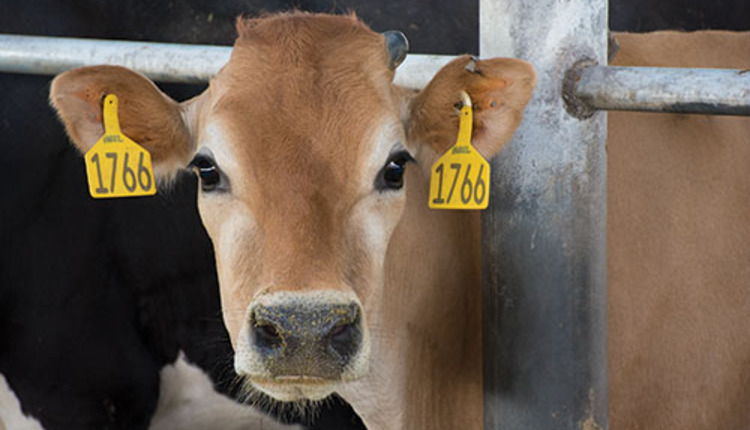The author is a director of marketing at Select Sires in the Mid-Atlantic area. He is also a graduate of the Young Dairy Leaders Institute.

The authors considered the fact that capable drivers staying off the road during periods of strong demand ultimately leads to extra taxi availability as additional providers enter the market to meet the times of most demand. On sunny days, each of these taxi drivers wants to work as well but now the demand is less, so there is an over supply in the market place. Each cabdriver focused on an individual daily goal has to work harder to hit that mark.
With just that economics study to base an opinion, it would be easy to connect insights to our current dairy environment. During periods of most demand, some producers are content to continue a level base of production while others see the opportunity to capitalize on an economic opportunity by expanding their operations.
As enough people capitalize on the opportunities, eventually the higher consumer demand is met and even exceeded. Any disruption to demand quickly causes an oversupply and there are now “more taxis on the road looking for a reduced customer pool.”
In reviewing the original 1997 taxi study, Princeton economist Henry Farber had his own ideas concerning supply and demand and did his own study in 2014. His study looked at 5 million taxi shifts on 8,800 drivers. He looked at drivers’ wages per minute and compared that rate to rainy days and sunny days. What he found was that demand does grow on rainy days by 4.8 percent. And supply also falls on rainy days . . . by a rate of 7.1 percent.
The eye-opening conclusion to Farber’s study is that the rate of supply does not decline because taxi drivers hit income targets, but rather because taxi drivers do not get their best return on rainy days. The study showed that because rain slows cars down, road traffic goes up and it is less convenient to get the miles driven to make the best return. The higher taxi demand also comes from less profitable shorter trips as the people choosing to ride on rainy days are coming from a pool that would have otherwise walked.
So many frustrations
Combined with the other reasons against working harder on rainy days, such as more accidents and pedestrians not being as observant, and you can soon understand why the economics are contradictory to what is expected.
So how might this relate to the dairy industry? One take-home message is that it is crucial to know your cost of production. The individual taxi drivers already knew what the 1997 economist did not, the rate of return is not as productive on certain days even when it seems that the market is ripe to provide a return.
Another similar consideration for taxi drivers and dairy producers is what price point truly dictates expanding the operation? Both groups are highly regulated and operate with a fixed established price. Knowing the cost of production and individual economics can identify the price where expansion makes sense. However, just as the data shows that the best rate of return is not always during the period of highest demand, producers must consider the ease of other operations to expand and enter the marketplace. An understanding of the true base of demand and the possibility for greater supply is a macro economic consideration that does eventually impact the individual producer on a micro economic level.
Surge pricing starts
This leads us to a consideration of the external threats that can affect both of the groups considered so far. An updated 2014 taxi study confirmed that demand does rise on rainy days and supply does go down. Since the highly regulated cabdriver was not fully meeting demand, there was an opening for a substitute provider to take some of the market.
In this case, Uber was the unregulated provider that stepped in to take some of the market. The highly popular ride hailing app allowed greater flexibility for a customer and added additional capacity to meet demand.
The current advantage for Uber is that the company practices “surge pricing,” which raises rates on higher demand days such as when it is raining and lowers fares when demand returns to normal. An adoption of surge pricing for taxis could serve as a catalyst for cabdrivers to work during rainy days even though it is unpleasant.
Dairy products have been similar
The external threats to the dairy industry have already been well-documented by our industry but remain real nonetheless. Fluid milk is still looked at as the industry standard just as the prototypical yellow cab is the taxi standard upon which alternatives are compared. Higher cheese, butter, and yogurt consumption have helped overall sales data but our industry standard bearer of white milk in a plain jug elicits no excitement on the shelf space. This allows a competing product such as almond milk in a well designed carton with lots of proclaimed health benefits to step in and steal that share of stomach.
Another threat that could serve as an opportunity is the ability to raise production more rapidly than we have had available to us in the past. While individual state regulations still present an uneven national market, precision feeding, efficient reproduction, and better cow health through improved facilities allow production to ramp up fairly quickly at the farm level.
Without additional demand, the growing supply presents a threat. If the industry can strategically use an increased supply to open new markets and to fight back milk alternatives at the fluid level, we can get back to better conversations about all of the possibilities that exist with a strong U.S. dairy industry. The alternative is having to deal with the energy sapping conversations of over supply and falling demand.









